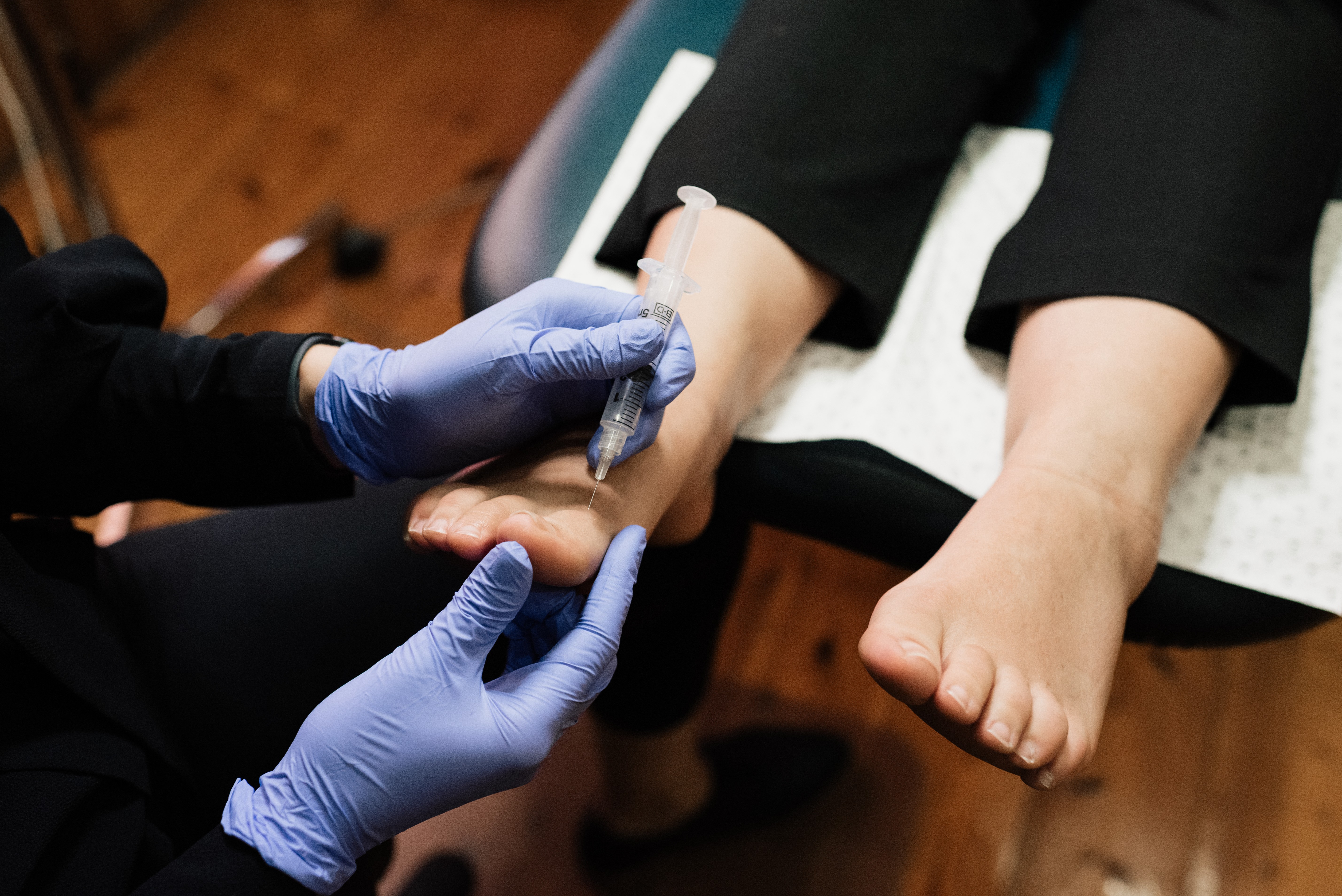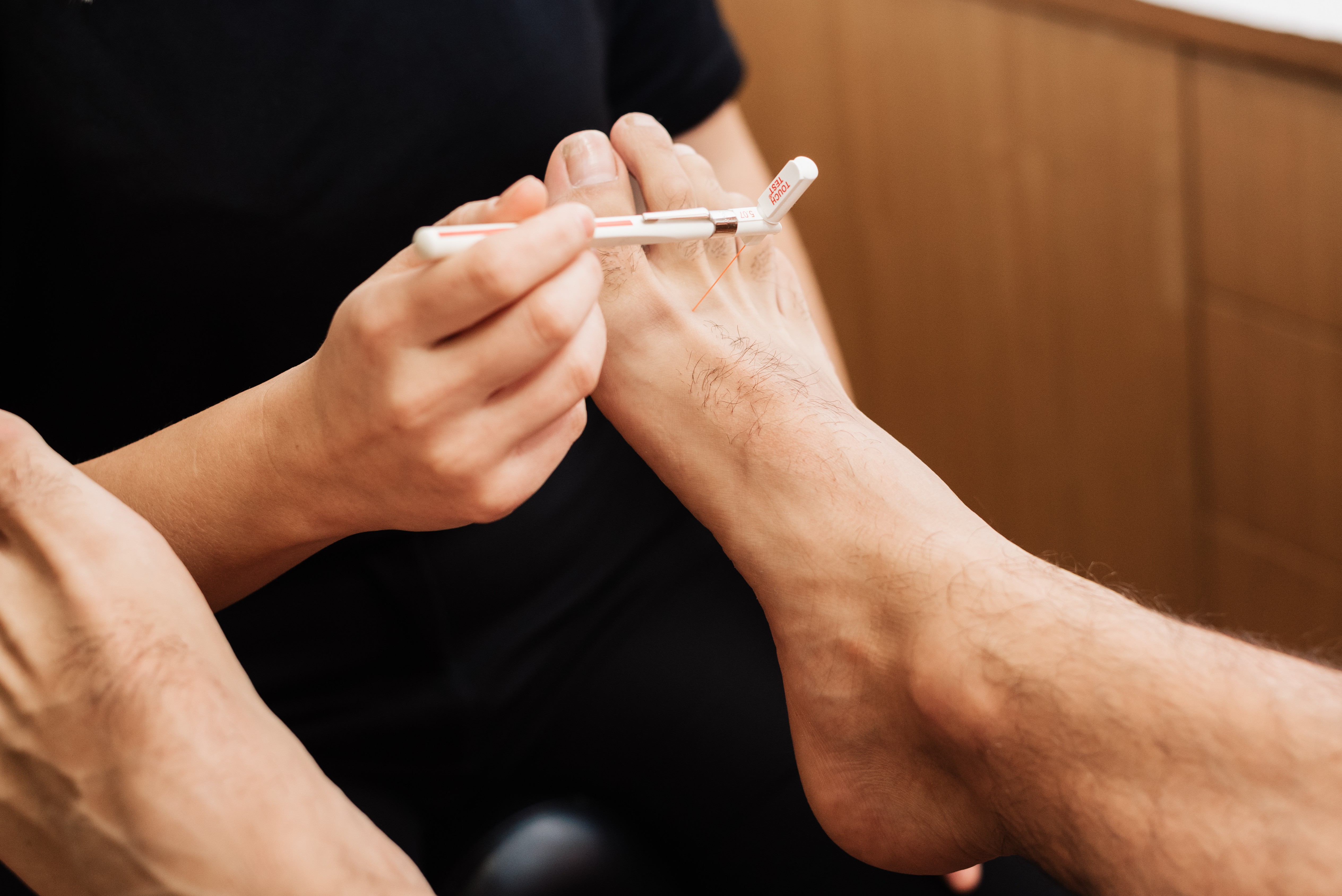Most people are aware that a sedentary lifestyle, smoking and eating fatty foods leads to the narrowing of the arteries and blood vessels of the heart. Over time, this creates a build up of fatty deposits that can reduce and eventually block the flow of blood in those vessels, which can lead to heart attack and stroke. This process is not restricted to the arteries and vessels of the heart, but affects the entire vascular system. Considering that the circulation of the feet and legs is the furthest from the heart, a common side effect and often a precursor to heart attack and stroke is an identical narrowing of the arteries in the feet and legs, known as peripheral arterial disease (PAD). More than one in ten adults suffer from peripheral arterial disease and left untreated, the condition can have serious effects on the feet including increased risk of amputation as well as increased risk of death.
Early diagnosis and treatment of problems with the feet can prevent heart disease and the risk of serious problems to the feet, yet peripheral arterial disease is often undiagnosed and often asymptomatic. People in high-risk categories for developing peripheral arterial disease include smokers; diabetics; people suffering from obesity; a family history of peripheral arterial disease, heart disease and stroke; high blood pressure; high cholesterol; and being older than 50 years of age. If you are at an increased risk of peripheral arterial disease it is important to see a Podiatrist for a check up, as catching the the problem early can be both limb and life-saving.
Leading a healthy lifestyle and taking care of your feet is the best way to avoid disease and limit complications. Eat a varied diet low in saturated fats, exercise regularly and avoid tobacco. These steps alone will lower the the build up of fatty deposits in the arteries , increase the flow of blood and oxygen to your feet, and reduce the risks from narrowed arteries caused by smoking. Take care of your feet by washing them daily in warm soapy water, and check for any sores or symptoms of disease.
Symptoms of Heart-Related Foot Problems
Diagnosis of problems with the feet can prevent heart disease and the risk of serious problems to the feet, including amputation. Yet peripheral arterial disease is often undiagnosed. If you have any of the symptoms of peripheral arterial disease it is important to make an appointment with a Podiatrist or medical professional as soon as possible. The main symptoms are described below:
Top Five Tips to Avoid Heart- Related Foot Problems
Most diseases are avoidable by leading a healthy lifestyle, and in the case of peripheral arterial disease, lifestyle changes can be the key to saving a leg or escaping premature death. Listed below are the five main points that can be controlled without medical intervention to prevent serious foot problems including painful cramps, wounds that fail to heal and amputation, as well the prevention of heart attack and stroke.
If you or a family member suffers from any of these symptoms, it is advisable to contact your Podiatrist or doctor to discuss and assess your situation. Please contact us for an appointment.
This information is based on materials supplied by the Australian Podiatry Association (SA).

Ingrown toenails can be painful, unsightly and debilitating. This post explores the many different factors that drive an ingrown toenail and how to prevent their development or manage them successfully.

When is it time to change your running or walking shoes? How long do they really last and what are the main signs that your shoes are ready for a change?

In the realm of diabetes management, where foot health plays a pivotal role, individuals in the Australian population are finding a trusted ally in PodSquared Podiatry. Specialising in comprehensive foot care, PodSquared Podiatry takes a proactive stance in addressing the unique challenges posed by diabetes. In this blog post, we'll delve into the tailored approach PodSquared Podiatry adopts to ensure optimal foot health for those managing diabetes.